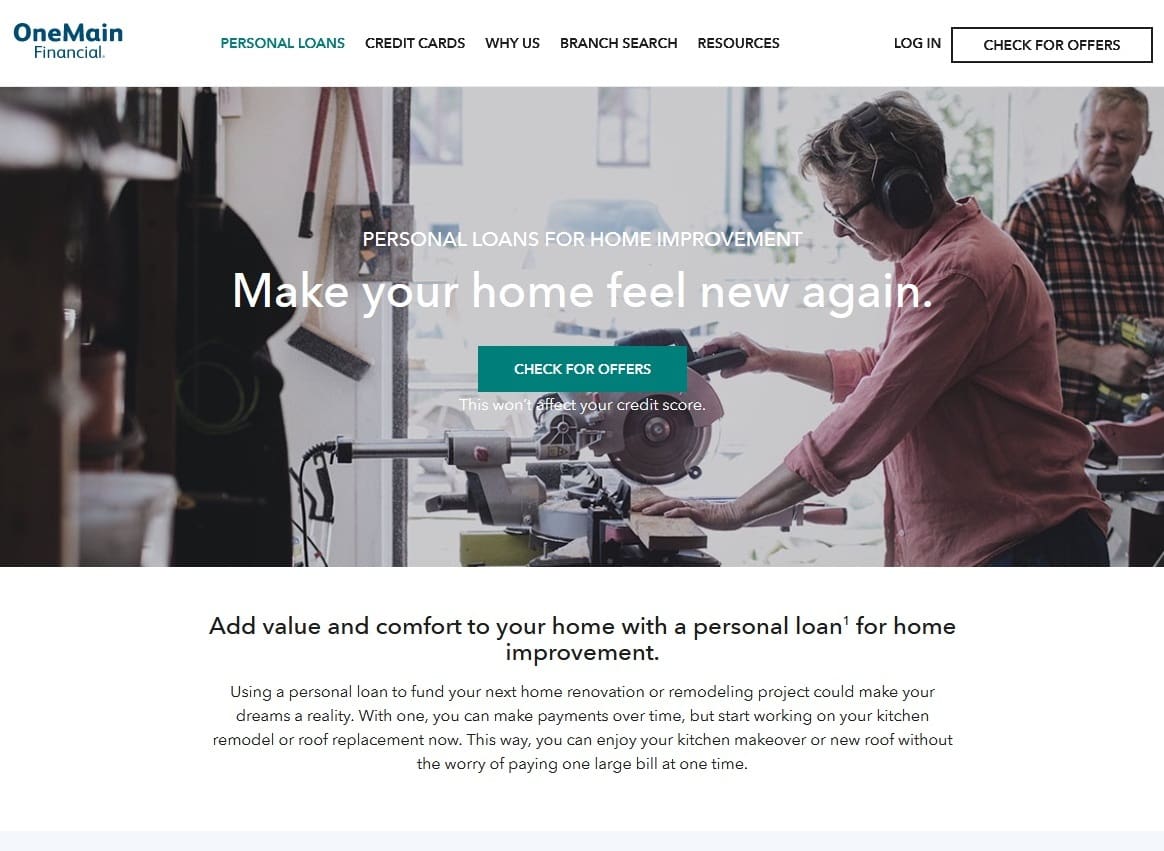
NEW YORK, March 28, 2023 (Newswire.com) – OneMain Financial: Homeowners use several forms of financing to make renovations or updates to their homes, including personal loans, home improvement loans, home equity loans, or a home equity line of credit. Each lender will have their own credit score requirements, and some may be more stringent than others.
Review this list of the most common types of home improvement loans for more details.
1. Home equity loan
While lenders often look for a credit score of at least 680 or higher to approve a standard home improvement loan, the qualifications for a home equity loan differ. This type of loan is secured by the equity the homeowner has in their home, which means some of the risks that the lender takes in issuing the loan is mitigated. The applicant’s credit score is still important, but the minimum required score may be lower.
Keep in mind that equity is the value of the home that has already been paid for through the principal portion of the mortgage payments but does not include any interest payments or unpaid balance due. The value of the homeowner’s equity may rise or fall based on the appraised value of a home. The lender may require an appraisal before approving the loan.
2. Home equity line of credit (HELOC)
Similar to a home equity loan, a credit score of 680 is typically required for a HELOC loan. With a HELOC, the borrower is approved to tap into a set amount, i.e., the line of credit, and then can withdraw from it in increments to fund the home improvement project.
HELOCs are a great option for home improvement because homeowners can limit their borrowing to only what they need. If the improvement increases the home’s value, the HELOC will likely pay for itself. The homeowner is given a period of time when they can withdraw funds from the line of credit, i.e., the draw period. A HELOC also has a period that starts 10-15 years after the first withdrawal is taken during which the loan must be paid back. It’s good to keep in mind that payments are generally subject to a variable annual percentage rate.
3. Cash-out refinance
This borrowing option allows the homeowner to take a second mortgage on their home for a larger amount than what is currently due on the first mortgage. The first mortgage is paid off and the excess proceeds would be used to fund the home improvement project. The minimum credit score requirement for this is usually 620, but some lenders may approve an applicant whose score is 580 or above.
The primary factor determining whether to approve an application for a cash-out refinance is the homeowner’s debt-to-income ratio (DTI). The DTI compares the applicant’s monthly debt payments to their gross monthly income. If the DTI is low, the chances of approval are higher, and the credit score requirement is not as strict. A good DTI is 36% or lower. The maximum DTI for most lenders is 43%.
4. FHA 203(K) rehab loan
Though not necessarily the right choice for everyone, the FHA 203(K) rehab loan is ideal for new homeowners who buy “fixer-upper” homes. It’s essentially a mortgage and home improvement loan combined. The minimum credit score requirement is around 620, the FHA requires a 3.5% down payment, and the renovation cost must be at least $5,000.
About OneMain Financial
OneMain Financial is the leader in offering nonprime customers responsible access to credit and is dedicated to improving the financial well-being of hardworking Americans.

